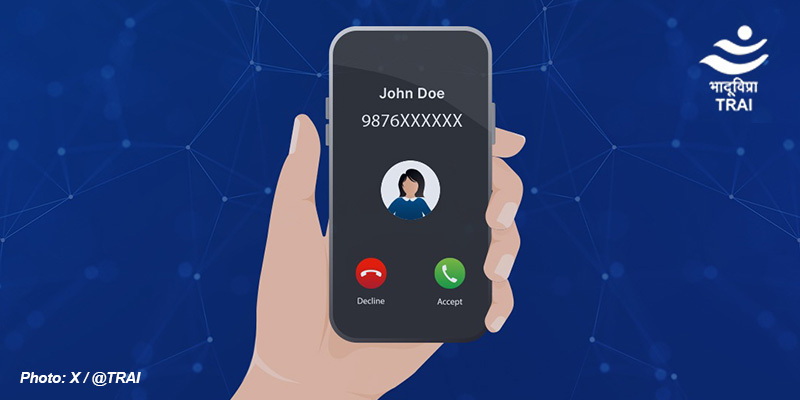- India
- Oct 29
TRAI, DoT bat for rolling out of caller identification service
• The Telecom Regulatory Authority of India (TRAI) has agreed with the Department of Telecom (DoT) to enable, by default, the display of the original name of the caller as per the identity used for connection to the called party.
• In March 2022, DoT had requested TRAI to provide recommendations, under Section 11(1)(a) of the TRAI Act 1997, on ‘Introduction of Calling Name Presentation (CNAP) Service in Indian Telecommunication Network’.
• After a detailed consultation with stakeholders, TRAI provided its recommendations in February 2024 on ‘Introduction of CNAP Service in Indian Telecommunication Network’ to DoT.
• The DoT had sought modification in the recommendation, saying that CNAP service shall be available by default to called party and if any subscriber (called party) does not require it then he/she may request to disable it as per procedure.
• Both TRAI and DoT have agreed that the service should be provided by default to subscribers using 4G and technologies beyond it as the process will be technically difficult to implement for 2G and 3G users due to bandwidth constraints.
Calling Name Presentation (CNAP) Supplementary Service
CNAP is the supplementary service which enables the called party to receive the information of the calling party. This supplementary service provides the ability to indicate the name information of the calling party to the called party at call set-up time for all incoming calls.
Why there is a need for CNAP service?
• India is currently the world’s second-largest telecommunications market. There were 114.55 crore wireless subscribers and 2.65 crore wireline subscribers in the country as of September 2022.
• The last two decades have witnessed a remarkable growth in the telecommunication sector in the country.
• At present, all access service providers in India provide Calling Line Identification Presentation (CLIP) supplementary service, as a part of their bouquet of services to telephone consumers.
• When a telephone consumer receives an incoming call, the telephone number of the calling party is displayed on the called party’s telephone, through the CLIP service.
• The telephone consumers require that they should be able to correctly identify the calling party.
• The CLIP service does not adequately meet this requirement as this service presents only the telephone number of the calling party.
• Apparently, the said requirement may be met through a name presentation facility where the name identity of the calling party is displayed on the called party’s telephone.
• Currently, the telephone handsets provide a feature (such as ‘contact list’) which allows the handset owner to store names of the called parties against their respective telephone numbers.
• At the time of an incoming call, the called party’s telephone handset searches for the calling party’s telephone number in its contact list.
• Telephone consumers, at various fora, have raised a concern that in absence of the calling party name presentation facility, they prefer not to attend calls from unknown telephone numbers, as most of such calls are unsolicited commercial communications (UCCs) from un-registered telemarketers. As a result, even genuine telephone calls go unanswered.
• Telephone consumers have also raised their concern in respect of robocalls, spam calls, and fraudulent calls.
• Robocalls are calls made automatically by IT-enabled systems mainly to financially dupe telephone consumers.
• Spam calls are unsolicited marketing calls from personal mobile connections, bypassing the do-not-disturb (DND) feature, and targeting many telephone consumers.
• Through fraudulent calls, certain individuals attempt to obtain details of bank account/ onetime-password (OTP) with an aim to defraud consumers.
• At present, smartphone users make use of native smartphone tools and third-party apps to identify the calling party name and mark spam calls.

